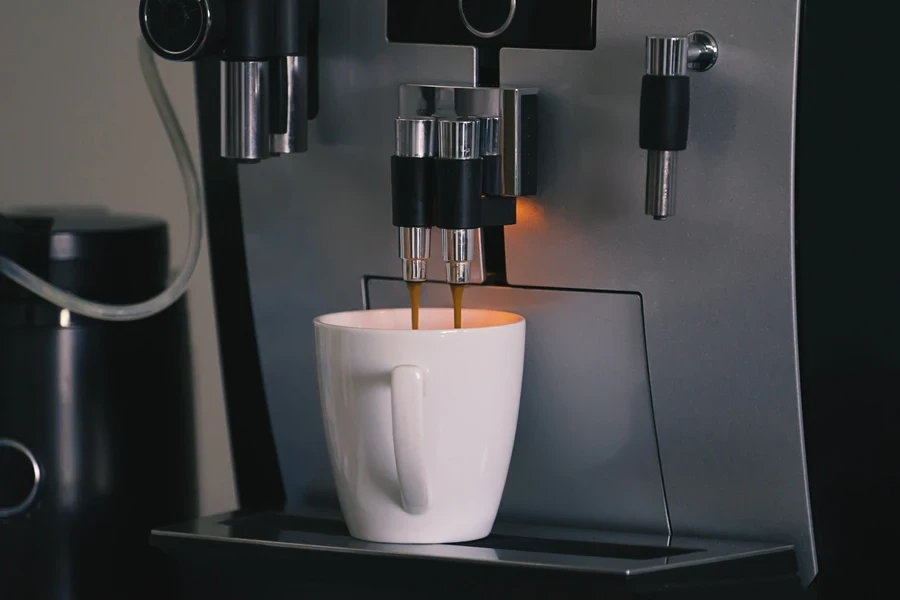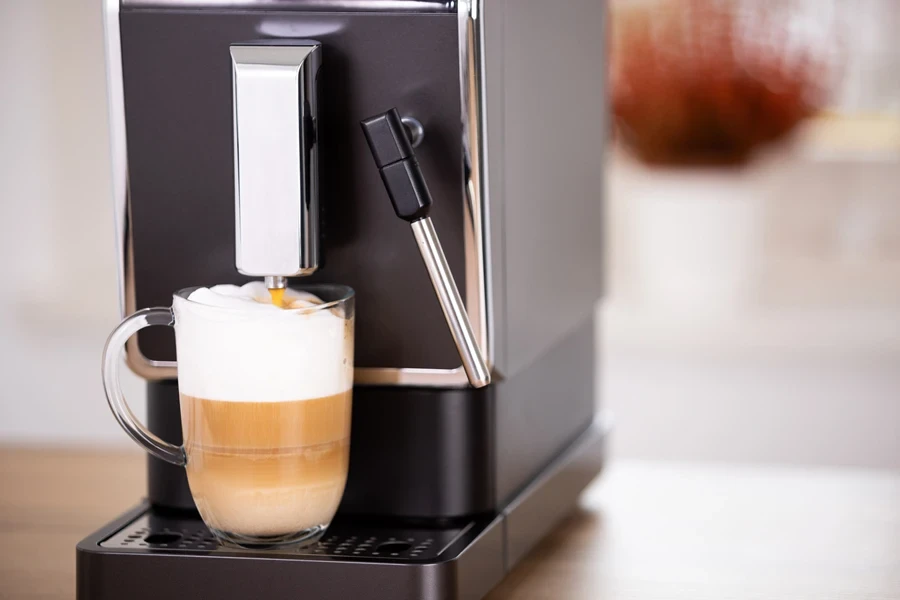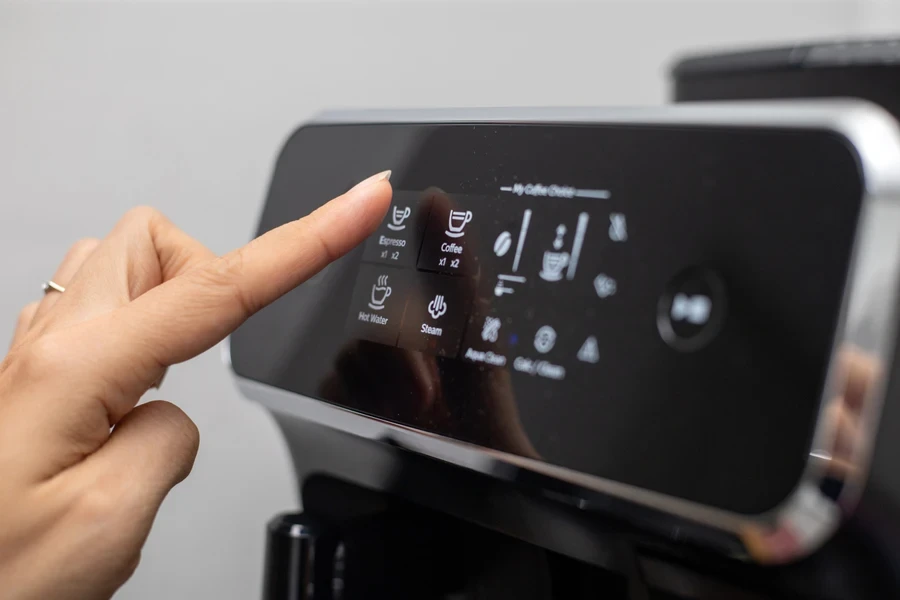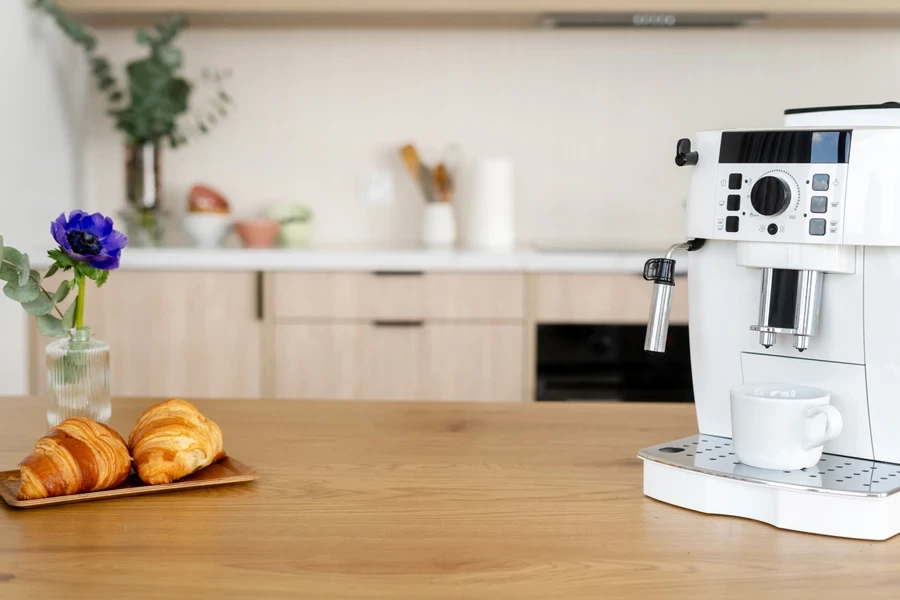Coffee culture is bigger than ever. People want great espresso without leaving their homes or offices, and automatic espresso machines are riding that wave, becoming must-have items for coffee lovers around the world.
This guide will walk retailers through the essentials of automatic espresso machines so they can confidently offer a selection that meets a range of customer needs in 2025.
Table of Contents
What are automatic espresso machines?
How big is the espresso machine market?
Key features to consider before stocking espresso machines
Rounding up
What are automatic espresso machines?
Automatic espresso makers are the “smart” solution for coffee. They simplify the espresso process so users don’t need barista-level skills to get café-quality results. Unlike manual machines, which require precise control and know-how, automatic machines do most of the heavy lifting for consumers.
Additionally, automatic espresso machines come in three varieties: semi-automatic, automatic, and super-automatic. Here’s a closer look at each one:
- Semi-automatic machines: These models can control the pressure automatically while users determine how much water they need for their perfect brew. Semi-automatic espresso machines are incredible options for anyone who loves their coffee strong and wants to make espressos and Americanos.
- Automatic espresso machines: These automate most of the process but may still require some user involvement, like frothing the milk separately or tamping the grounds manually. Nevertheless, automatic espresso machines are great for consumers looking for hassle-free espresso at home.
- Super-automatic espresso machines: These models go all-in, handling everything from grinding (with built-in grinders) the beans to steaming the milk. They’re all about one-touch convenience—all consumers have to do is choose their favorite espresso drink, and the machine will handle the rest. They’re perfect for customers who want good coffee without the fuss.
How big is the espresso machine market?
The espresso machine market is on fire. With more people looking for quality coffee at home and more coffee shops popping up worldwide, demand is growing rapidly. Grand View Research reported that the espresso coffee machine segment dominated the coffee maker market with a 35.0% share in 2022. The segment is exploding thanks to the rising “home barista” trend, which motivates many consumers to make café-quality coffee at home.
Key features to consider before stocking espresso machines
1. Boiler configuration

Boiler configuration sounds technical, but it’s an important part retailers must consider. After all, the boiler is the espresso machine’s engine, so almost everything depends on it. More importantly, these machines can have three different configurations—here’s a quick breakdown:
- Single boiler: Single boilers are quite compact, making them simple and affordable. However, they do have their limits. For example, they heat water for brewing and steaming, so users have to wait a bit between making espresso shots and frothing milk. Although it sounds like a nightmare for a coffee shop, it can work for home users who don’t need to make multiple drinks in a row.
- Heat exchanger: A heat exchanger machine is a step up. It can brew and steam simultaneously, thanks to a clever design that heats water in a separate tube. This setup is also efficient for users who want a smoother workflow without the price of a dual boiler, making it ideal for “prosumer” machines aimed at advanced home baristas and smaller coffee shops.
- Dual boiler: Dual boilers are the more luxurious options, built for performance and power. They allow users to make back-to-back drinks without a hitch with separate boilers for steaming and brewing. These are great for high-demand setups, like busy coffee shops or serious enthusiasts who won’t settle for less than perfect.
2. Boiler materials

Boiler material might seem minor, but it’s worth noting because it affects the machine’s durability and the espresso’s flavor. Here’s a table showing the options brands should consider:
| Material | Description |
| Aluminum | Aluminum boilers are common in lower-cost machines. They’re lightweight and heat quickly, so they’re a good pick for budget-conscious buyers. However, they may require more frequent maintenance to prevent scaling. |
| Stainless steel | Stainless steel is the “sweet spot” for many customers. It’s durable, corrosion-resistant, and offers good heat retention for consistent espresso quality. Stainless steel boilers are more common in mid- to high-end machines and are ideal for customers who want high-quality results. |
| Copper and brass | Copper and brass boilers are incredibly durable and provide excellent heat retention, so they’re usually in high-end commercial models. |
3. Brew group types

The brew group is where the water and coffee grounds meet to create espresso. More importantly, different types affect flavor and temperature stability. Here’s what to look for:
- E61: This classic brew group is popular for its durability and consistency, making it popular in traditional machines. It’s also hands-on, which appeals to customers who enjoy the craft of espresso making.
- Saturated group: This design is more common in high-end commercial machines and helps keep the brew head at a stable temperature, providing better thermal stability. The result is the perfect cup for coffee shops or advanced users.
- Electronically heated group: This modern option is common in many super-automatic models, where manufacturers design them to deliver stable heat with minimal user input. This group focuses more on consistency, making it a solid choice for customers who want simplicity without sacrificing quality.
4. Portafilter size

The portafilter holds the coffee grounds, and its size can influence espresso quality. Retailers can stock up to two sizes—here’s a closer look:
- 58mm: The standard size in commercial machines, a 58mm portafilter allows for better extraction and more control over flavor. Coffee professionals and enthusiasts typically prefer this size.
- 53mm and smaller: Smaller portafilters are more common in home machines. They’re beginner-friendly and require less of the machine’s boiler, though they may slightly limit flavor depth.
5. Reservoir capacity

Single-boiler espresso machines have compact water reservoirs, generally holding 70 ounces or less. Daily espresso fans typically need to refill every couple of days. Dual-boiler models and some heat exchanger machines provide more freedom with larger tanks starting at 98 ounces—high-capacity models even push up to 135 ounces.
While reservoir size is mostly a matter of convenience, avid coffee makers often explore the option of directly connecting their machines to a water line. This setup requires more know-how and is typically suited to higher-end models, as most machines under $1,000 lack this feature.
Rounding up
Coffee is a big part of millions of consumers’ lives—and many of them love the idea of making their beverage at home. So, it’s no surprise that automatic espresso machines are popular for home use. Consumers don’t need barista-level skills to enjoy an amazing homemade espresso cup with these machines.
Retailers can also market these coffee makers to coffee shops, as a good percentage of the population still enjoy having their beverage outdoors. Remember to consider the five factors discussed here, as they’ll help business buyers ensure they stock the right machine for their target consumers.




